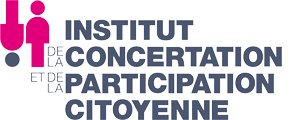How do we ensure that AI promotes democratic participation, rather than hinders it? That was the question behind AI for Digital Democracy: New Guidance from Global Case Studies, a global webinar that brought together more than 300 participants. Together with UNDP, FNF Global Innovation Hub, and Civic Tech Field Guide, we launched the updated Digital Participation Guide, which now includes practical guidance on AI.
Here are some key takeaways from our speakers:
1. AI can democratize participation — but must complement human contact.
“Artificial intelligence can democratize access to information and the decision-making process. But… we have to be really careful about privacy, equity, and transparency… Technology should complement, not replace, all the human contact and democratic deliberation.” — Alejandra Rodas Gaiter, Mayor’s Office of Bogotá
2. AI offers promise and peril.
“Across this guide, we are neither fully optimistic nor pessimistic. I think this current state requires a nuanced position… the threats are real, and we’ve observed them. These aren’t hypothetical threats.” — Matt Stempeck, Civic Tech Field Guide
3. Participation requires context and strategy.
“Don’t imagine that everything can be tackled by just one tool… What’s more important, and you need to remind yourself, is having a strategy, a holistic design of where you want to use new tools.” — Ya-wei Chou, Friedrich Naumann Foundation
4. AI can help bridge divides.
“I know many people think that AI will facilitate polarization, but I think in the other way around… AI can always help you to see there’s different opinions in the world, and people can… become more tolerant or inclusive.” — Ya-wei Chou
5. AI, in itself, doesn’t fix old forms of exclusion
“Digitalization, and with AI advancement even more, is emerging with this huge promise of unprecedented scale… But we need to be very careful, very thoughtful, very deliberate in how we use digital tools. If we’re not, not only do we risk reproducing old forms of exclusion, we risk potentially creating new ones.” — Emanuele Sapienza, UNDP
6. Start with the problem, not the tech.
“We don’t want people to start with the tech. We want people to start with the problem they’re trying to solve, and then think about whether digital tools and AI are the right fit for that.” — Melissa Zisengwe, People Powered
